All You Need To Know About Flowering Cannabis Plants

The flowering stage is the most exciting part of a cannabis plant’s lifecycle. As a grower, you get to nurture your plant from a vegetative baby into a full-blooming plant. That’s not to say that navigating through the flowering stages of cannabis plants is easy, though. New growers are bound to have questions about flowering, like “how long before buds appear?” or “how long does the flowering stage take?” Here, we’ve compiled answers to all these questions and more!
Flowering Stage – When Does It Start?
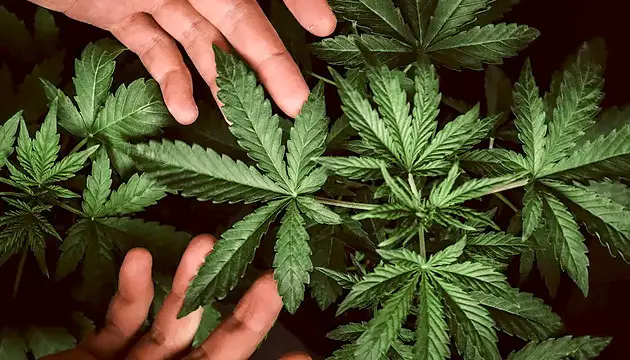
Most plants will begin to flower when they get 12 hours of light and 12 hours of darkness in a day. This mimics the natural sunlight a plant would experience when the season changes from summer to fall. Not all plants need this switch to start flowering, though. Autoflower strains will enter the flowering stage on their own after about three or four weeks of vegetative growth.
How Can I Spot Emerging Cannabis Flowers?

One of the first signs of the marijuana flowering stage is when plants start to sprout pistils. These structures resemble fine white hairs emerging from the points where the fan leaves connect to the main stem.
Once pistils begin to develop, you’ll soon notice actual flowers forming, with more white hairs sprouting from the bud sites. Within the first few weeks of flowering, your plants should begin producing quarter-sized buds, which will become denser and firmer as the plant matures.
If you don’t see any pistils, there’s a chance your plant is male. To be sure, check out our article on how to sex cannabis plants.
Flowering Stage – Week By Week
During each week of the cannabis plant’s growing phase, it’ll undergo some unique changes. These changes all happen slowly, so a newbie grower may not notice them at first. We’ve outlined some of the different stages of flowering below.
Week 1
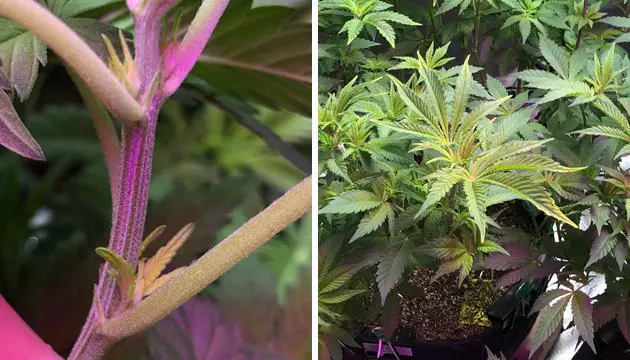
Cannabis plants don’t waste any time once they switch into their flowering phase. During the first week of flowering, you may notice your plants stretching upward at an alarming rate. Don’t freak out – this is normal! In fact, your plants may double in size during their first week of flowering. While the plant is officially flowering, its first week will mostly add lots of green, vegetative growth. Its stems and leaves will become sturdier and stronger, which will set it up for success once the actual flowers start forming in later weeks.
Week 2
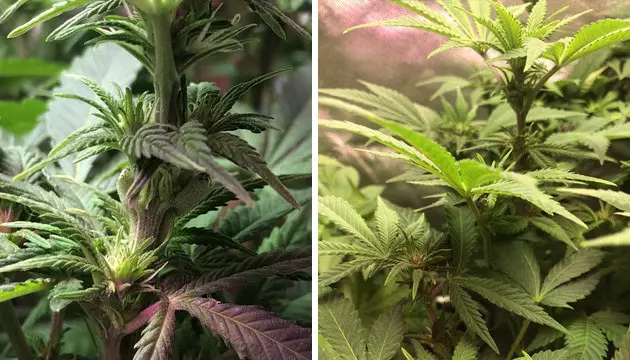
By the second week of flowering, your female plants will start forming white-haired pistils. Male plants, in contrast, will form pollen sacs that look like green bulbs. Males don’t produce flowers. Even worse, male plants can cause female plants to begin growing seeds. You don’t want that – you want dense flowers! As a result, it’s important to remove all male plants from your garden as soon as you notice them. Also, if you’re going to ScrOG your plants, this is a good time to start.
Week 3
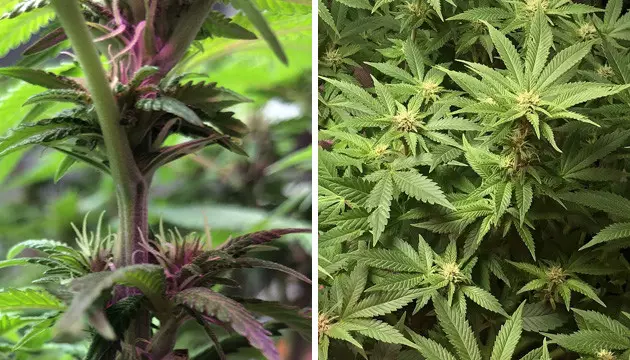
Once your plants are three weeks into their flower cycle, they’ll gradually stop stretching upward. Instead, they’ll begin to focus their energy on growing flowers from bud sites. While your bud sites were mostly sprouting white hairs over the last two weeks, you should see some actual flowers beginning to develop now. These flowers are still fairly immature though, so you won’t see any trichomes or smell the plant’s aroma yet. During this phase of your plant’s lifecycle, it’s important to keep an eye out for nutrient issues like nutrient burn (discolored tips) or discolored leaves. If you see any of these problems developing, it’s okay to cut down on feeding by watering down your nutrient mix.
Week 4
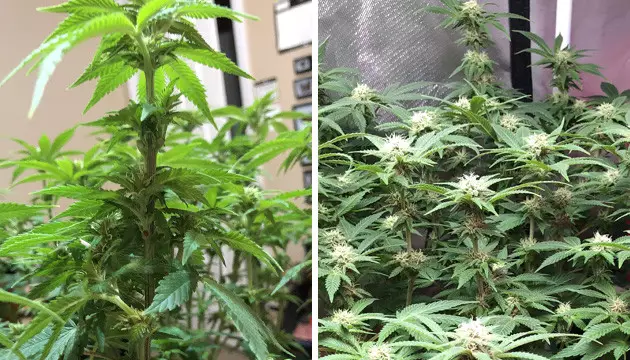
Week four of flowering is one of the most exciting stages in the grow cycle. This is when you’ll notice your buds really starting to bulk up – in fact, you may even see them increase in size overnight. At this point, the buds can become so heavy that you’ll need to support the branches using stakes or a trellis net. In addition, week four is when your plants begin to produce visible trichomes, giving the buds a frosty appearance. You’ll also notice the aroma intensifying, as the scent of your plants starts to permeate the entire garden.
Week 5
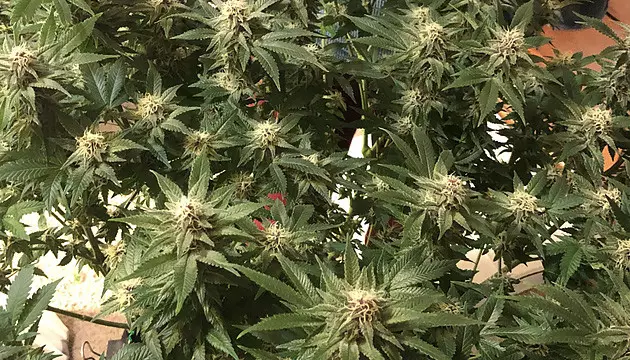
Week five picks up where week four left off: with huge, swelling buds. Your plants will also get sticky to the touch as flowers and trichomes continue to develop. Your plants’ pistils – the white hairs that first signaled they were female in early flowering – may begin to fade to a dark brown or amber color. Your plants will also begin to smell very powerful. In fact, you may be able to smell them even from outside your garden.
Weeks 6-8
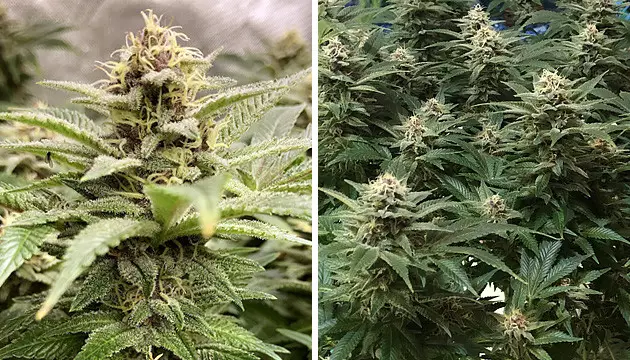
You’ve made it this far. Congratulations! You may be wondering what to expect during the last 2 weeks of flowering. Your plants will be shifting all of their energy from any sort of vegetative growth into pure flower power. At this point, you’ll want to begin flushing your plant. This means that instead of feeding it nutrients, you need to begin feeding only water in order to prevent nutrient buildup and improve the taste of the product. While this may be the home stretch for your plant, you still need to stay on top of things! You may notice peculiarities in your plants. For example, the tops of your flowers may start growing upward but not filling out. This is called “foxtailing,” and is a sign that your heat or light levels are too high. There’s nothing to worry about – just check the levels and act accordingly.
Tips And Tricks For A Successful Flower Cycle
Understanding the progression of the marijuana plant flowering cycle is only part of the battle. Below, you can find a few techniques that will help you maintain a healthy garden throughout the weed flowering stage.
Pruning Is Essential!
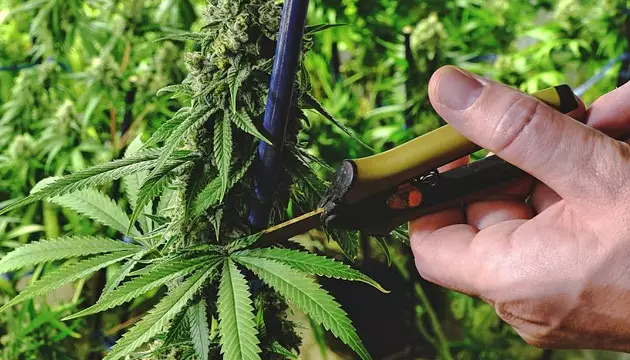
If you leave a flowering plant to its own devices, it can quickly grow out of control. That’s why pruning is an essential technique for any grower. Prune your plants early on in the flowering stage. Cut off anything below your canopy to ensure that all your plants’ energy ends up in healthy, fat buds near the top of your canopy.
Avoiding Light Burn
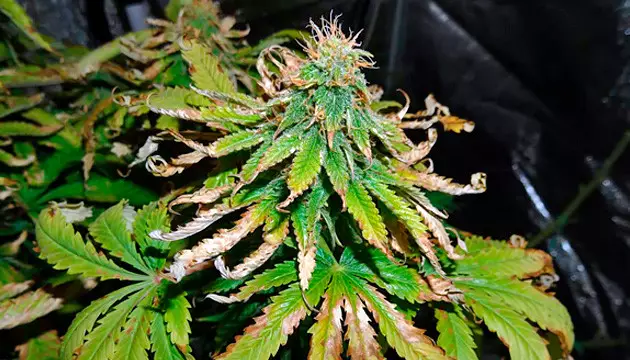
Light is an essential component of photosynthesis, but too much light is bad news. When your plants stretch during the first few weeks of flowering, they may get dangerously close to your light source. To avoid light burn, you can use plant training techniques likes low-stress training (LST) or ScrOGging to keep your plants a healthy distance from your garden’s light source.
Maintain 45% Relative Humidity
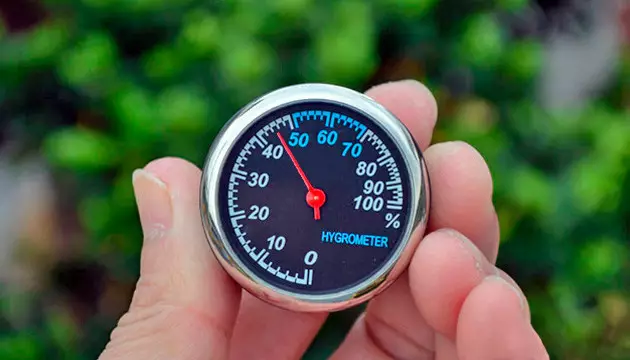
It’s important to maintain proper humidity (about 45%) throughout the grow cycle. Use a hygrometer to keep this under control. During the first few weeks of flowering, your plants need a humid environment to help them thrive. As your plants get older, they’ll naturally give off more humidity. As a result, the humidity in your garden may slowly creep upward. Don’t let this happen! Maintaining a consistent 45% humidity late in the flowering stage will protect your plants against pest infestations and fungal infections.
Extra Support To Hold Your Plants Up
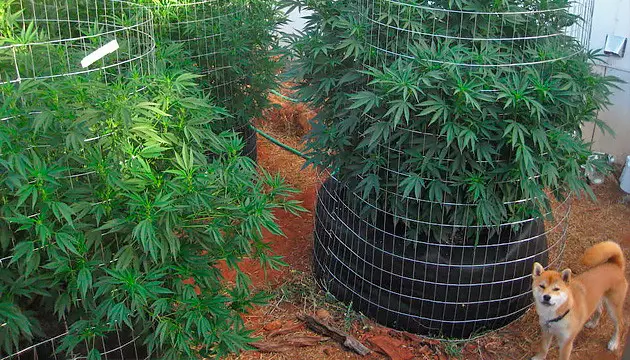
In the first few weeks of the flowering phase, your plants will be spry and springy. They’ll stretch toward your light source at a breakneck pace, and you may even need to tie some branches down. However, as the flowers on your plants develop, their stems may not be able to keep up. As buds get big, they can weigh branches down until they snap and damage your plant. As a result, you may need to give your plants some extra support. You can use plant stakes and twist ties to help support your plants as your nugs get big.
Coming Into Bloom

As you nurture more plants through the flowering cycle, you’ll begin to internalize how long it takes to flower weed. You’ll learn what part of the plant develops during which week of the flower cycle, recognize any abnormalities and be able to fix them. The flowering cycle is one of the most fun parts of growing weed, and once you complete it, you’ll have plenty of homegrown bud to enjoy!
Herbies Head Shop expressly refuses to support the use, production, or supply of illegal substances. For more details read our Legal Disclaimer.


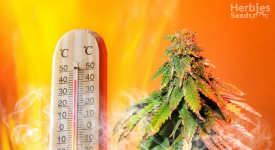
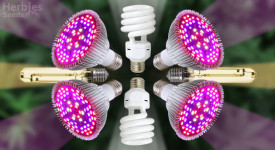


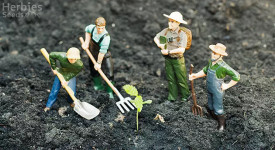

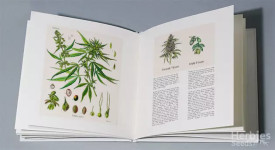

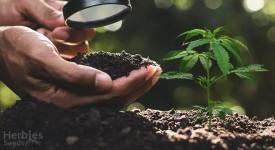

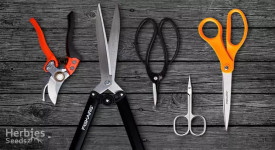
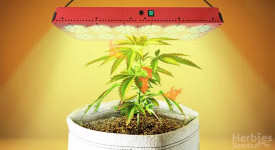
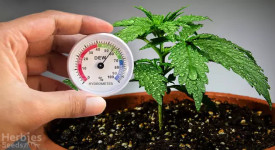
Thank you for leaving a comment for us!
Your feedback will be posted shortly after our moderator checks it.
Please note that we don’t publish reviews that: